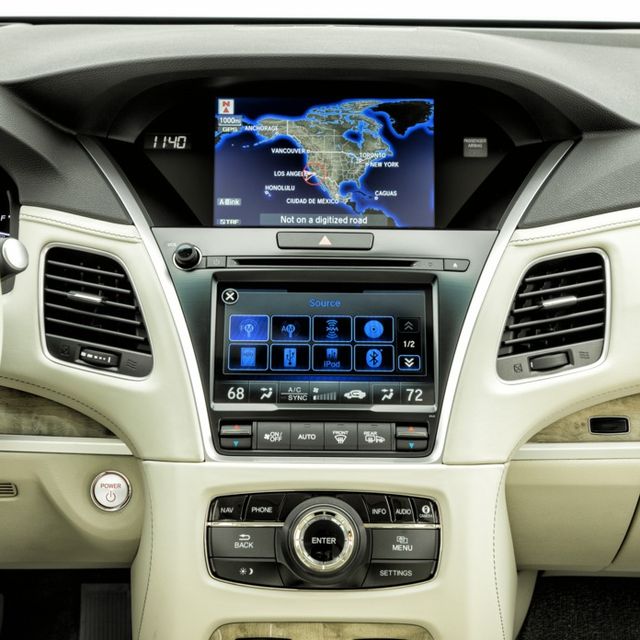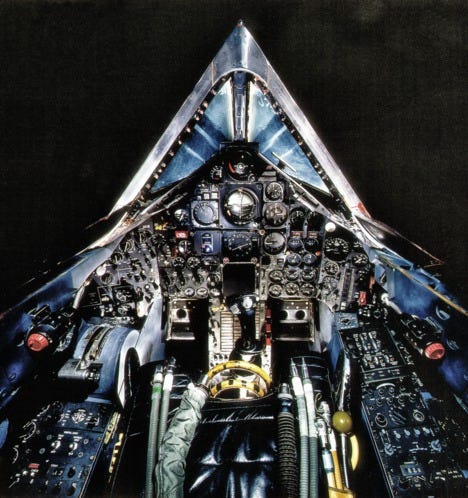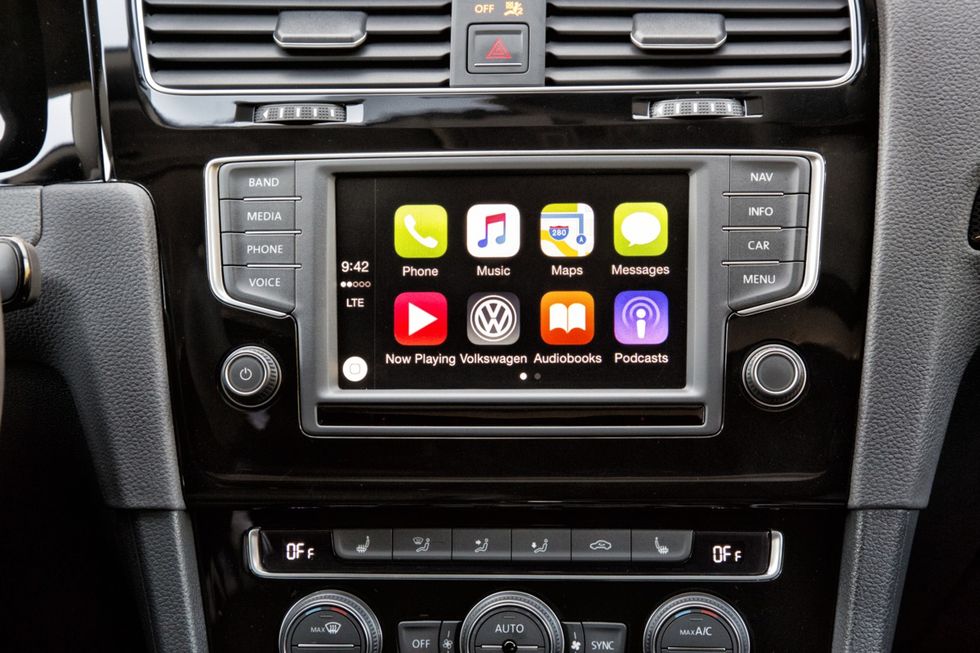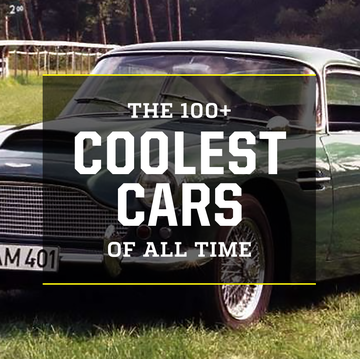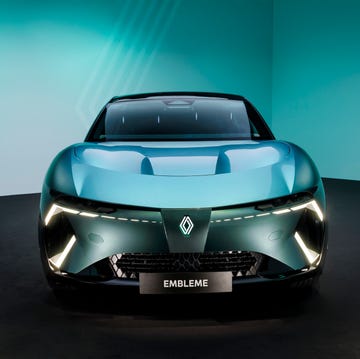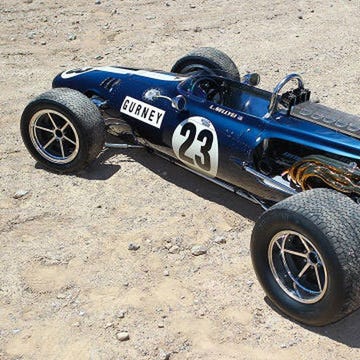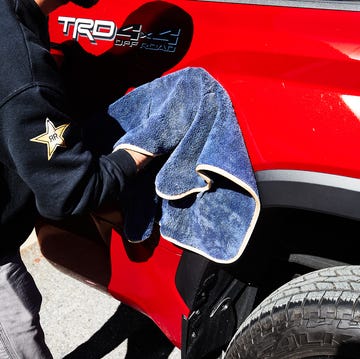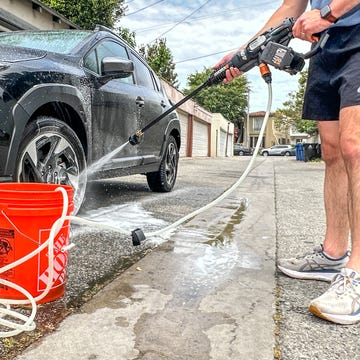When I’m in charge of a car company, we’re going to have one strict rule about interior design: Make it so it doesn’t cause you to crash the car.
You’d think this would already be in effect everywhere, but no. Ever since the arrival of the iPhone, car designers have aspired to replicate that sleek, glassy aesthetic within the cabin. And it never works, because you tend to look at a phone while you use it. In a car, you have this other thing you should be looking at, out there, beyond the high-resolution panoramic screen that separates your face from the splattering june bugs.
If a designer came to me with a bunch of screens, touch pads, or voice-activated haptic-palm-pad gesture controls, I’d trigger a trapdoor that caused the offender to plummet down into the driver’s seat of a Cadillac fitted with the first version of the CUE system—which incorporated a motion sensor that would actually change the screen as your finger approached it. And I’d trigger my trapdoor by turning a knob. I wouldn’t even have to look at it.
Knobs are great that way. So are buttons and shift levers. I know: booorrr-ing! Your mom’s Grand Caravan had a shift lever, right? She didn’t have to look at it or think about it, and if someone borrowed her sweet Iacocca-mobile, they’d know how to use it, too. What fun is that when you can turn shifting gears into a convoluted game of Bop It? Designers like to say that novel electronic shifters—rows of buttons, pull switches, or self-centering nubs—are all about freeing up interior space. But reinventing the shifter is really about impressing your friends with how novel and futuristic your car is. Well, sure. They don’t have to live with it.
The same goes for the screenification of everything. Screens can work if the display is sufficiently huge that you don’t need a jeweler’s loupe to set your HVAC mode. But even a Tesla Model S and its interior JumboTron is lacking compared to a system with built-in hard points. Give me a screen, sure, but also give me some buttons and knobs, stuff I don’t have to look at while I’m driving 70 mph.
Trucks tend to get this right. I’ve driven the new Ram 1500, Chevy Silverado, and GMC Sierra, and all of them have volume and tuner knobs flanking a touch screen. So does the new Genesis G70, the Toyota Corolla Hatchback, and, while I’m at it, my 2010 Lincoln MKT EcoBoost, which was built the year before Ford wandered into its touch-pad adventures. The MKT lost its knobs and hard buttons in 2013, replaced by touch pads that survive to this day. I fail to see the improvement.
I entertain the notion that I’m just an old fuddy who likes to bounce between Pop2K (channel 10) and Pitbull (13) on Sirius XM without taking my eyes off the road. Maybe I’m calcified in my thinking and unable to appreciate the brilliance of these innovative interfaces. Why, I remember the early 2000s, when BMW first introduced iDrive, which controlled a dash screen via a central knob and a few menu buttons. Every adult seemed to hate it, but I suspected that more agile minds would have no problem. So I took a 645Ci to a Boston grade school and challenged a class of sixth-graders to complete a series of tasks without having anything explained to them. On average, the kids took about 30 seconds to bounce from the home menu to the media screen, change the station, and navigate back. I’d say that’s the sign of an intuitive system, given that they started with zero knowledge of how anything worked. And yet, grown-ups despised iDrive. I couldn’t convince anyone otherwise.
To get a younger-than-me perspective on all this, I talked to 25-year-old Nascar driver Bubba Wallace Jr., who is working on a campaign against distracted driving. Do pointlessly complicated interfaces annoy him, too? “I have a Tahoe,” he said. “I think I’ve listened to broadcast radio once. Every other time, I set up a playlist on my phone before I start driving. I’m not changing stations.”
That’s interesting. Maybe everyone doesn’t prize a tuner knob the way I do. But even if you’re patched into CarPlay at all times, you’ll still want to adjust the volume now and then. For that, Wallace Jr.’s Tahoe has a knob. He didn’t mention that, because he probably doesn’t even think about it—it just works. I rest my case.
This appears in the March 2019 issue. Want more Popular Mechanics? Get Instant Access!
Ezra Dyer is a Car and Driver senior editor and columnist. He's now based in North Carolina but still remembers how to turn right. He owns a 2009 GEM e4 and once drove 206 mph. Those facts are mutually exclusive.
